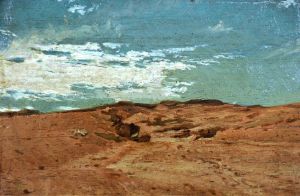Orethil
| Orethil | |
|---|---|
| Image |  |
| Spirit | Oras |
| Native Sophants | Orasians • Duranthi • Minthari |
Introduction
Orethil is the name given to the physical realm of earth within the greater structure of Adaris. It encompasses all material geography that define lived experience on land. Realms such as Terasil, Vaelthar, and Zanarak exist within Orethil’s bounds, connected by overland paths, deep roads, and spiritual corridors.
Orethil is shaped by physical processes and is considered the foundational plane from which many other tangible realms diverge.
The name is derived from Oras, the spiritual emobiement of earth, and -ethil, an archaic stem meaning "held" or "shaped."
History
Orethil emerged during the early stabilization of Adaris, following the creation of time by the Ascendant Spirit Kairos. As the primordial elements sought to impose order on the chaotic void of Astram, Oras anchored the material world into place. From this anchor, the first lands and structures of Orethil coalesced—mountains, valleys, and the enduring crust of the physical world.
The intrusion of Jala into the forming plane led to the catastrophic event known as the Great Erosion, fracturing the borders of the elemental realms and forever altering Orethil’s structure. This marked the beginning of true geological memory, as layers of trauma and change became embedded in stone.
In the aftermath, Orethil became the site of balance and containment—a place where multiple forces converged but were held stable through the enduring will of Oras. It was within this realm that the first mortal civilizations formed, guided by ascendant spirits. Over time, these early cultures shaped the surface and subsurface of Orethil.
Geography
Orethil’s landmasses are divided into continental subrealms, each shaped by distinct spiritual and environmental characteristics. Though grounded in the dominion of Oras, the spirit of earth, Orethil remains in continual contact with the surrounding influence of other elemental forces.
Watercourses and surface oceans exist within Orethil, but they are expressions of intrusion rather than origin. The world-plane is encircled by Pelagia, the endless sea formed by Jala, the spirit of water. Jala’s influence seeps inland along coastlines and river systems, softening and reshaping the terrain but never fully claiming it.
Forests, deserts, and highland ecosystems have developed in isolated zones where elemental balance allows—often along the shifting boundaries between earth and the other elemental realms. These intersections generate ecological diversity, though always filtered through the dominant presence of stone and memory.
Despite its grounding in matter, Orethil is a dynamic landscape—continually shaped by the slow, resonant dialogue between elemental forces. Its changes are layered rather than abrupt, shaped by time, erosion, and the spiritual pressures that flow beneath the visible world.
Climate
Orethil spans a wide range of latitudes and elevations, resulting in diverse and stratified climates across its surface and subsurface regions. The northernmost reaches are dominated by frigid highlands, glacial shelves, and permafrost basins, where temperature extremes and spiritual stillness foster hardy, slow-adapting lifeforms. In contrast, the southern regions give way to sun-scorched deserts, eroded basins, and heat-cracked plateaus where survival depends on scarcity-driven adaptation.
Between these extremes, temperate valleys, mountain-ringed basins, and seasonal steppes form pockets of stability. These regions often serve as cradles for major settlements and trade corridors. Orographic effects caused by massive mountain ranges such as the Citadels and the Murazkar Range produce microclimates—ranging from mist-fed forests to dry shadows and wind-carved rocklands.
Subterranean zones, while shielded from atmospheric fluctuation, maintain their own internal climate systems driven by geothermal gradients, air circulation through natural chimneys, and proximity to elemental rifts. These underground climates are generally cool, consistent, and humid, supporting fungal ecologies and bioluminescent life adapted to darkness.